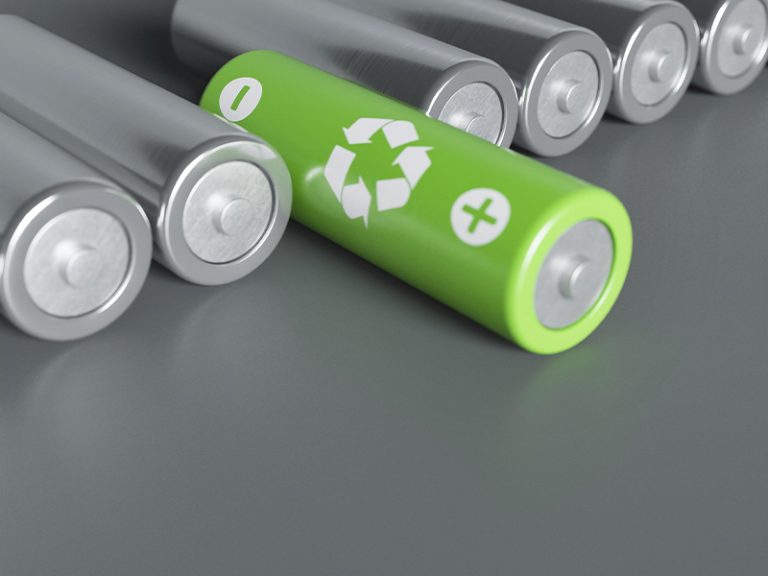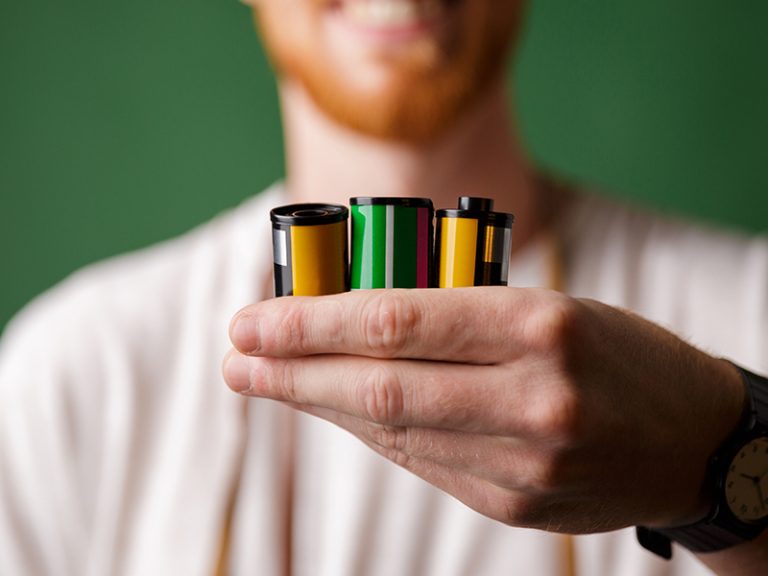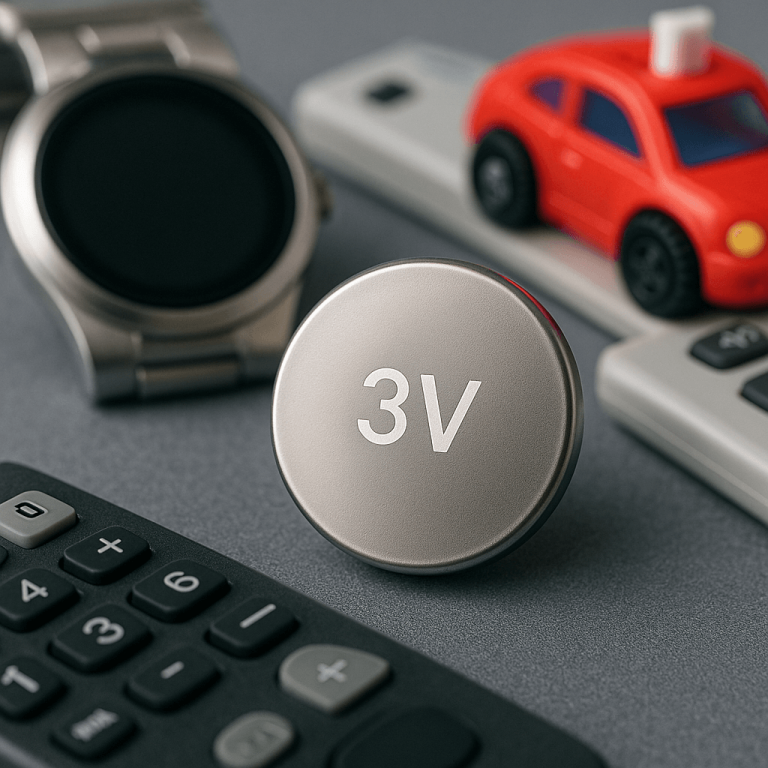LR44 is a tiny alkaline manganese dioxide battery which is used to power a wide range of electronic gadgets like watches, calculators, toys, thermometers, and remote controls. It is built to meet all major quality, environment, and safety standards including IEC 60086-5, RoHS and REACH compliance, battery directive 2006/66/EC, and ISO 9001. In this article, we will discuss major features and specifications of LR44 battery cells, and also explain common LR44 battery replacement options with different chemistries.
Specifications of LR44 Battery Cells
Mechanical Specifications:
LR44 battery resembles coin or button in shape. In other words, it has flat contacts. It weighs just around 2.0 grams with 11.6mm diameter. Its typical height is 5.4mm.
Voltage Specifications:
This battery provides 1.5V nominally and cuts-off at 0.9 – 1.0V. Supply voltage of LR44 battery depends upon exact chemistry of cell, storage conditions, battery age, and discharge conditions. Cut-off voltage is also dependent upon connected device or circuitry. It can also be used for applications which require pulsating voltages or instant drain but this will discharge battery relatively quickly and reduce its service life.
Thermal Specifications:
It has operating temperature range of -10 to 60°C with 20°C being optimal temperature. Nonetheless, it supplies 1.1V in adverse operating conditions like -10°C. Its storage temperature is recommended be maintained between 5 and 30°C.
To ensure safety, reliability, and continuity of supply; directions by manufacturer shall be considered regarding storage and operating environments.
Capacity:
Capacity for a battery refers to the total amount of electrical charge it can store. It is measured in ampere-hours (Ah) also written as Amp-hours. This is measure of total energy stored in electrolyte of battery. LR44’s typical capacity range is 110 to 130mAh, average capacity is 120mAh.
Discharge Characteristics:
Discharge characteristics of any battery can be studied using discharge curve which is a plot of voltage against percentage of discharged capacity. As LR44 battery discharges, its voltage drops slightly and cut-offs totally at 0.9 to 1.0V.
This figure illustrates as discharge current increases voltage drop becomes steeper and cut-off voltage is reached more quickly. LR44 battery can provide such abrupt current but then cell will not last longer as it would have been with normal operation.
Features of LR44 Battery
Reliability:
Despite small size and light weight, this battery supplies stable nominal voltage (1.5V) consistently. 1.5V is also its OCV or Open Circuit Voltage. This trait indicates its high efficiency. This is paired with prolonged service life, high capacity, reliability, and high energy density.
Environment Safety:
LR44 battery has alkaline chemistry and does not contain any toxic metal like lead, cadmium, or mercury. So it is a good choice for eco-conscious consumers. Anyhow, this eco-friendliness shall not be confused with human friendliness. If someone swallows it, it would pose extreme danger damaging internal organs so it shall be kept away from children. Its disposal shall also follow regulatory instructions so environment and human beings do not get harmed.
Long Shelf life:
LR44 battery has long shelf life because of low self-discharge. If this battery is stored at +20°C for 1 year, it still retains 90% of its capacity. It is also resistant to corrosion because of alkaline chemistry which, further, contributes towards its longer shelf life.
Internal Resistance:
Internal resistance of LR44 battery is very low, typically ranging between 3 and 9 ohms for new batteries. Lower internal resistance makes internal power loss quite low and efficiency higher.
Wide Availability:
LR44 battery is widely available and easy to replace. As replacement doesn’t need any specific tools and skills so it is a very convenient choice for many consumers.
Battery Disposal and Recycling:
LR44 cells are recyclable in most countries. Anyhow, for disposal state directives must be followed. Best way is to return them at some collection point which are setup in every community. Local solid waste authority can also be contacted for further guidance and assistance.
Applications of LR44 Batteries
Compact size, stable voltage supply, durable structure, and longer shelf life of LR44 coin batteries make them suitable for many applications. As this battery cell is readily available and less in cost, it enhances their market demand.
Wristwatches
Wristwatches require a steady and reliable power supply so accurate time could be maintained. Moreover, such cell is required which would not need frequent replacements. So LR44 battery is a good option for analog watches.
Calculators
Desktop calculators and pocket calculators also use LR44 batteries as power source. Calculators need power supplies which have longer shelf life capable of supplying intermittent energy. LR44 is a perfect fit for calculators and other alike devices.
Hearing Aids
Hearing aids need compact and reliable power supply which is also safe. Though, some other silver oxide batteries are mostly used for hearing aids but LR44 is also a good option.
Laser Pointers
Lasers need right voltage and intermittent supply for proper functioning. LR44 battery serves these purposes very well.
LR44 battery finds its uses in countless applications. Just to summarize, this button battery is also used for kids’ toys and games, LED flashlights, remote controls, camera accessories, security devices, medical devices, decorative items, and calibration equipment.If you want to learn more about coin cell testing or battery performance evaluation, you may also explore our battery test equipment solutions offered at Sinexcel-re
LR44 Battery Equivalents and Replacements
LR44 battery has alkaline chemistry which finds its equivalents and replacements in silver oxide, zinc air, nickel metal hydride, and mercury oxide chemistries. The LR44 battery has several equivalents, including AG13, A76, 357, and 76A batteries. We will look into their chemistries, manufacturers, and electrical specifications.
AG13 vs LR44 Battery
AG13 has silver-oxide and alkaline chemistry variants and has specifications very close to LR44 battery cells. Specifications of AG13 button cells are discussed here to demonstrate their capability to replace LR44 batteries for various applications.
- LR44 battery has 1.5V nominal voltage while nominal voltage of AG13 battery is 1.55V for silver oxide chemistry and 1.5V for alkaline chemistry.
- LR44 battery has 0.9 to 1.0V cut-off voltage while cut-off voltage for AG13 battery (silver oxide variant) is 1.2V indicating more stable supply even towards the end of battery life. Anyhow, for alkaline chemistry, cut-off voltage is same as that of LR44 coin cell battery.
- Supply voltage of LR44 button cell drops over time (from 1.5V to 0.9/1.0V). Supply voltage of AG13 is relatively more consistent or stable.
- Typical capacity of LR44 battery lies between 110 and 130mAh. Compared with LR44, AG13 has higher capacity range of 150 to 200mAh for silver oxide chemistry.
A76 vs LR44 Battery
A76 comes in two chemistry types and alkaline A76 is another direct replacement of LR44 with resembling characteristics. Some of its characteristics are narrated here to present a comparison.
- LR44 has alkaline manganese chemistry and A76 might have alkaline or silver oxide chemistry. Both are free from toxic metals giving environment friendly options.
- A76 is capable of supplying high pulses and its supply will not be affected in long run if silver oxide variant will be used. LR44 can also supply pulses and its service life will get affected.
- Typical energy capacity for alkaline type A76 lies between 110 and 130mAh just like LR44 button cell.
- Shelf life of LR44 is 3 to 5 years while shelf life of A76 is 3 years. It refers that LR44 has lower internal resistance and lower internal current leakage which preserves its capacity for longer period of time.
As stated above alkaline A76 and LR44 are direct replacements for each other. Their size, chemistry, voltage characteristics, degradation, and capacity profiles are same. Only their shelf lives are little different so, usually, their names are also used interchangeably. In other words, they are different labels for same kind of small button batteries.
357 vs LR44 Battery
357 is a small battery which is used for many applications like laser pointers, watches, and medical equipment. This also serves as a suitable alternate of LR44 battery. Here some characteristics of 357 and LR44 are mentioned side-by-side to present a wholesome comparison.
- 357 battery has silver oxide chemistry while LR44 has alkaline chemistry.
- 357’s nominal voltage is 1.55V which is little higher than LR44’s nominal voltage of 1.5V.
- LR44 has nominal capacity ranging between 110 and 130mAh while capacity of 357 goes beyond 150mAh.
- 357 coin cell has diameter of 11.6mm and height of 5.4mm. Both dimensions are same as those of LR44 battery cell. While LR44 weighs 2g and 357 weighs little more at 2.3g.
76A vs LR44 Battery
76A is an alkaline coin cell battery and it is regarded as another label name for LR44. It has exactly same characteristics and specifications as that of LR44. It has nominal voltage of 1.5V with 1V cutoff voltage. Its typical energy storage capacity lies between 110 and 130mAh.
| Chemistry | Nominal Voltage | Cutoff Voltage | Capacity | Manufacturers and labels | |
| LR44 | Alkaline | 1.5V | App. 1V | 110 to 130 mAh | Duracell, Maxell, Panasonic, Seiko, Sony |
| AG13 | Alkaline or Silver Oxide | 1.5V for Alkaline and 1.55V for Silver Oxide | App. 1V for Alkaline chemistry and 1.2V for silver oxide | 110 to 130mAh for Alkaline chemistry and 150 to 200mAh for Silver Oxide chemistry | Duracell, Varta, Maxell, Rayovac, Panasonic, Sony |
| A76 | Alkaline or Silver Oxide | 1.5V for Alkaline and 1.55V for Silver Oxide | App. 1V for Alkaline chemistry and 1.2V for silver oxide | 110 to 130mAh for Alkaline chemistry and 150 to 200mAh for Silver Oxide chemistry | Energizer, Philips, Sony, Maxell |
| 357 | Silver Oxide | 1.55V | 1.2V | 150 to 200mAh | Duracell, Energizer, Philips, |
| 76A | Alkaline | 1.5V | App. 1V | 110 to 130mAh | Duracell |
Casting a look at comparison chart makes it clear that minor differences between different coin cells depend upon chemistries and not labels, Replacing the LR44 battery requires special attention.Different labels are used by different manufacturers on slightly different batteries. Anyhow, alkaline battery cells have little less nominal supply voltage and cut-off voltage from respective parameters of silver oxide button cells. Other minor differences can also exist and these might be related to size, weight, supply voltage, internal resistance, or other such characteristics. Due to higher cut-off current and higher capacity, cells with silver oxide chemistry are better option for many applications which require consistent energy supply.
How to Choose an Appropriate Coin Battery Cell?
Discussion has made it clear that specifications of LR44, 357, 76A, A76, and AG13 are quite similar. Mostly manufacturers retain electrical and mechanical specifications of their alkaline and silver oxide battery cells and match them with standardized specifications of respective battery type. Tolerance in the readings might vary little but it won’t affect performance and reliability. Changes in size will matter the most as some type of battery cells might not fit in some gadgets. So it is essential that before buying button cells for any gadget, user considers manufacturers guideline or directions for battery selection. Operating environment and storage environment of device or gadget shall also be considered to ensure safety and reliability. LR44 is reliable option for many devices but more demanding applications shall be served using silver oxide batteries.
Suggestions for Additional Content
1. Safety Handling of Button Batteries
Did you know? If a child accidentally swallows a button battery, it could cause chemical burns, esophageal perforation, or even internal bleeding. Here are some critical suggestions to keep in mind:
How to Store
Lock all loose batteries in a cabinet or box out of children’s reach and sight. Kids might mistake batteries for toys or coins, and that’s no small matter.
Check Devices
For toys, remote controls, or anything with batteries at home, ensure the battery compartment is securely closed. Using screws to fix the cover is best—little hands can be surprisingly nimble!
Remind Caregivers
Repeatedly warn family members or babysitters helping with childcare about the dangers of button batteries. Studies show most accidents happen because caregivers aren’t aware of the risks.
Emergency Response
If you suspect a child has swallowed a battery, don’t give them water or induce vomiting—rush them to the nearest emergency room! , every second counts.
2. Practical Tips for Everyday Use
Storage Tips
✓ Keep batteries in a cool, dry place (15-25°C is ideal); high temperatures (above 38°C) or low temperatures (below 0°C) can shorten their life.
✓ Don’t mix them with keys or coins—short circuits could lead to leaks or fires. Use the original packaging or a dedicated storage box instead.
✓ Don’t toss old batteries in the trash; take them to a community recycling point for safe and eco-friendly disposal.
Battery Selection Guide
✓ Always check the device manual! Using the wrong battery could damage your equipment.To learn more about battery testing, reliability analysis, or energy storage solutions, visit the Sinexcel official website for more technical resources and application guides.
✓ For devices needing stable voltage (like medical equipment or hearing aids), opt for silver oxide batteries; for remotes or toys, alkaline batteries are more cost-effective.
✓ For frequently used devices (like a kid’s toy car), choose high-capacity batteries to cut down on replacement hassles.




